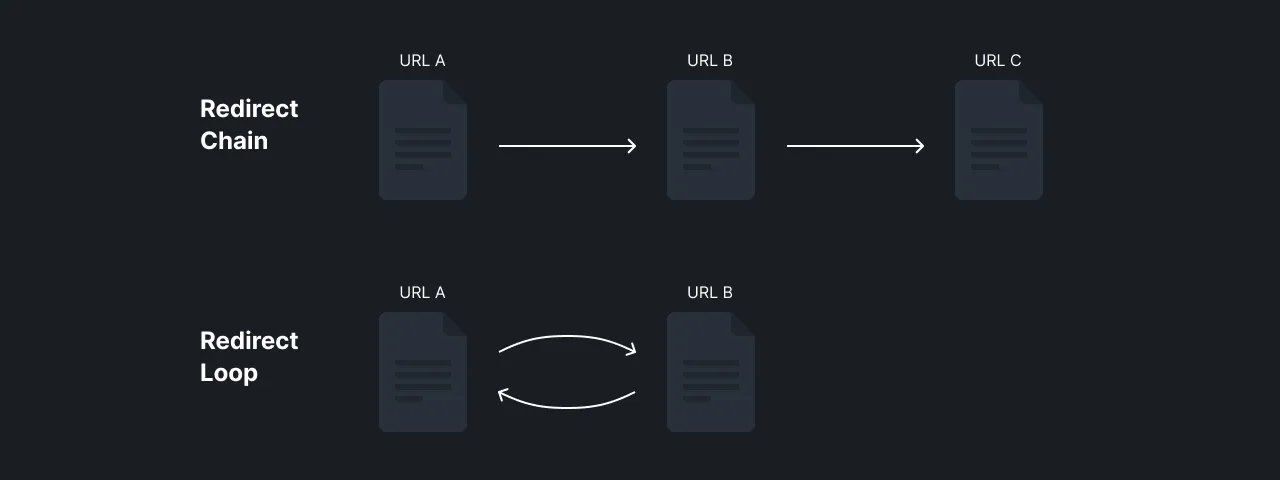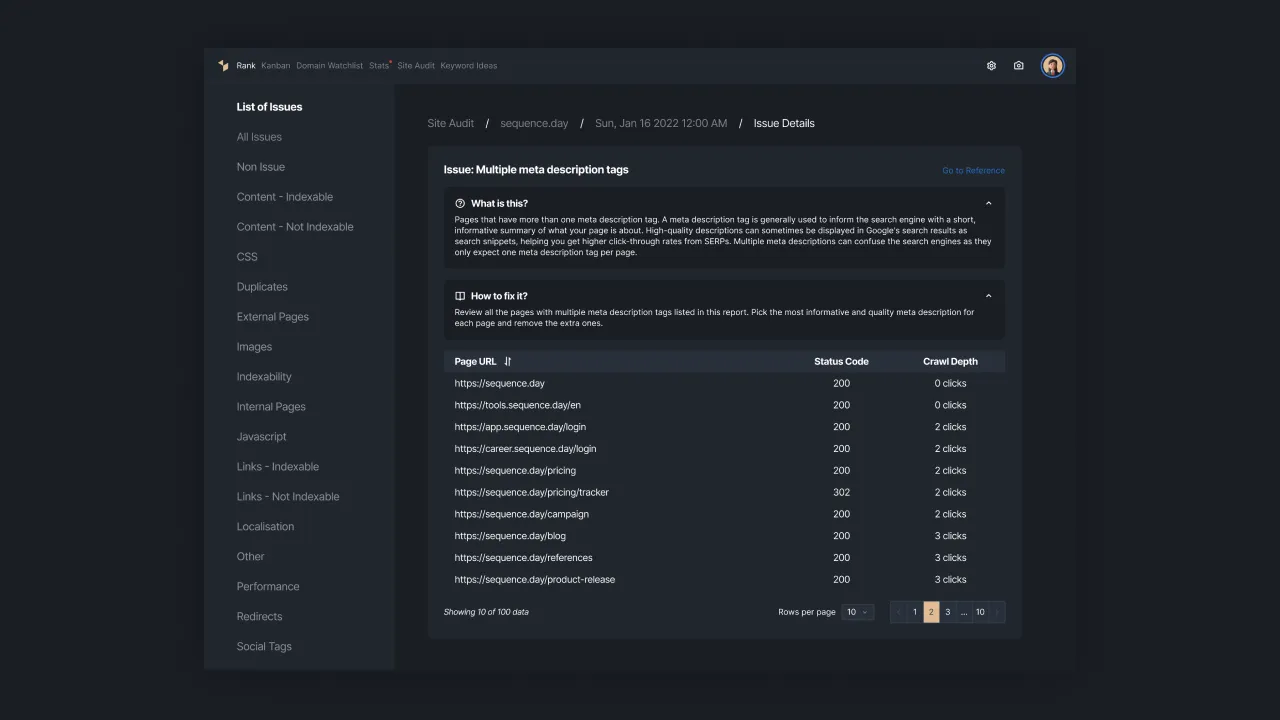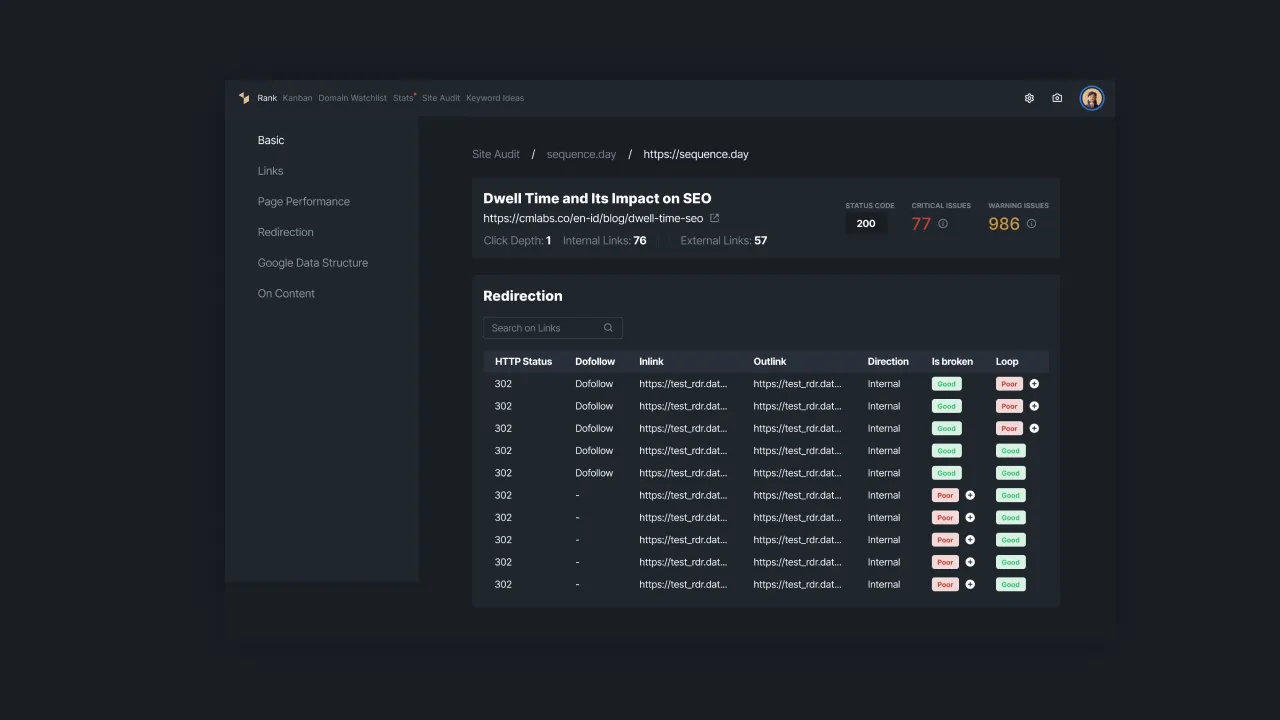Site Audit Report Detail - Redirection
In this guideline, we will cover the details of the URL redirection audit report to help you observe the list of redirecting links from the selected URL. The data in the audit report includes HTTP status codes, follow link attributes, initial links, destination links, link directions, to URL redirect conditions.
What is URL Redirection?
A URL redirect occurs when there are two redirects from the initial URL to the destination URL. For example, when page A is redirected to page B and then redirected to page C. If the process of redirecting page B is redirected back to page A, then the condition is called a redirect loop.
 |
|---|
| Figure 1 - Illustration of Redirect URL |
How to Access the URL Redirection Audit Report
Click the settings icon on one of the URLs in the Issue Details table to view the audit report detail page. Next, select the Redirection menu to access the details of the redirection link audit results. We provide filter and data search options to make it easier for you to view these redirect links.
 |
|---|
| Figure 2 - List of URLs on Issue Details |
URL Redirection Audit Report
In the following report, we display the HTTP status code information of each redirected URL. The HTTP status code 3xx indicates the presence of a redirect link. Some HTTP status codes that may be in your URL include
- Status Code 300 Multiple Choices: Indicates that the request has more than one possible response, and the user must select one of them.
- Status Code 301 Moved Permanently: Indicates that the URL of the requested resource has been permanently changed according to the response URL provided.
- Status Code 302 Found: Indicates that the requested resource has been temporarily moved to the given URL.
- Status Code 303 See Other: Indicates that the redirect did not link to the requested resource, but to another page.
- Status Code 304 Not Modified: This indicates that the resource has not been modified since the page was last accessed.
- Status Code 305 Use Proxy: Indicates that the requested resource is available only through the proxy, its address is available in the response.
- Status Code 307 Temporary Redirect: Indicates that the requested resource has been temporarily moved to the given URL. The difference with status code 302 is that status code 307 guarantees that the method and content will not be changed when a redirected request is made.
- Status Code 308 Permanent Redirect: Indicates that the requested resource has been definitively moved to the given URL. The difference with the 301 status code is that the 308 status code guarantees the request method and content will not be changed.
In addition, we also provide information about the follow link attribute. Links with the rel dofollow attribute allow crawlers to follow the link and reach the web page that the link goes to. Meanwhile, a link with the rel nofollow attribute indicates the link does not need to be indexed by crawlers because the content is not very important.
There is also a link from information to find out the absolute URL of the page where the link comes from. We also provide a link to information to specify which URL the link will go to next.
You will also see direction information for each link. The value of direction can be internal if it goes to a page inside your site or external value if it goes to a page outside your site. The redirection report also contains broken link information indicating whether the link redirected the user to a broken page.
We also identify whether the URL being audited falls into a recurring redirect link or a redirect loop. Redirect loops can occur due to a redirect between two links. For example, URL 1 redirects to URL 2, but URL 2 redirects to URL 1.
It prevents crawlers from accessing and indexing the destination page it will affect the page's position in search results. Therefore, if the loop data audit report evaluates to true, you should immediately fix the redirect link to avoid any problems with your website.
 |
|---|
| Figure 3 - Details of the redirection links audit report |
The Effect of Redirect Chain on SEO
Web owners need this report to find out how many redirect links are on each URL. Too many page redirects can take longer to load and delay crawling. In addition, the redirect chain also reduces the amount of page authority being forwarded.
Google will only follow up to 5 hops in the redirect chain per crawl. If there are more than 5 hops in your redirect URL, it may cause Google to stop crawling and fail to index the destination URL. This will adversely affect the SEO quality and ranking of the website in search results.
That is the discussion of the URL redirection details. Optimize your website by improving the structure of the redirect chain and making sure there are no redirects to broken links. If you need our help, please contact us via support@sequence.day